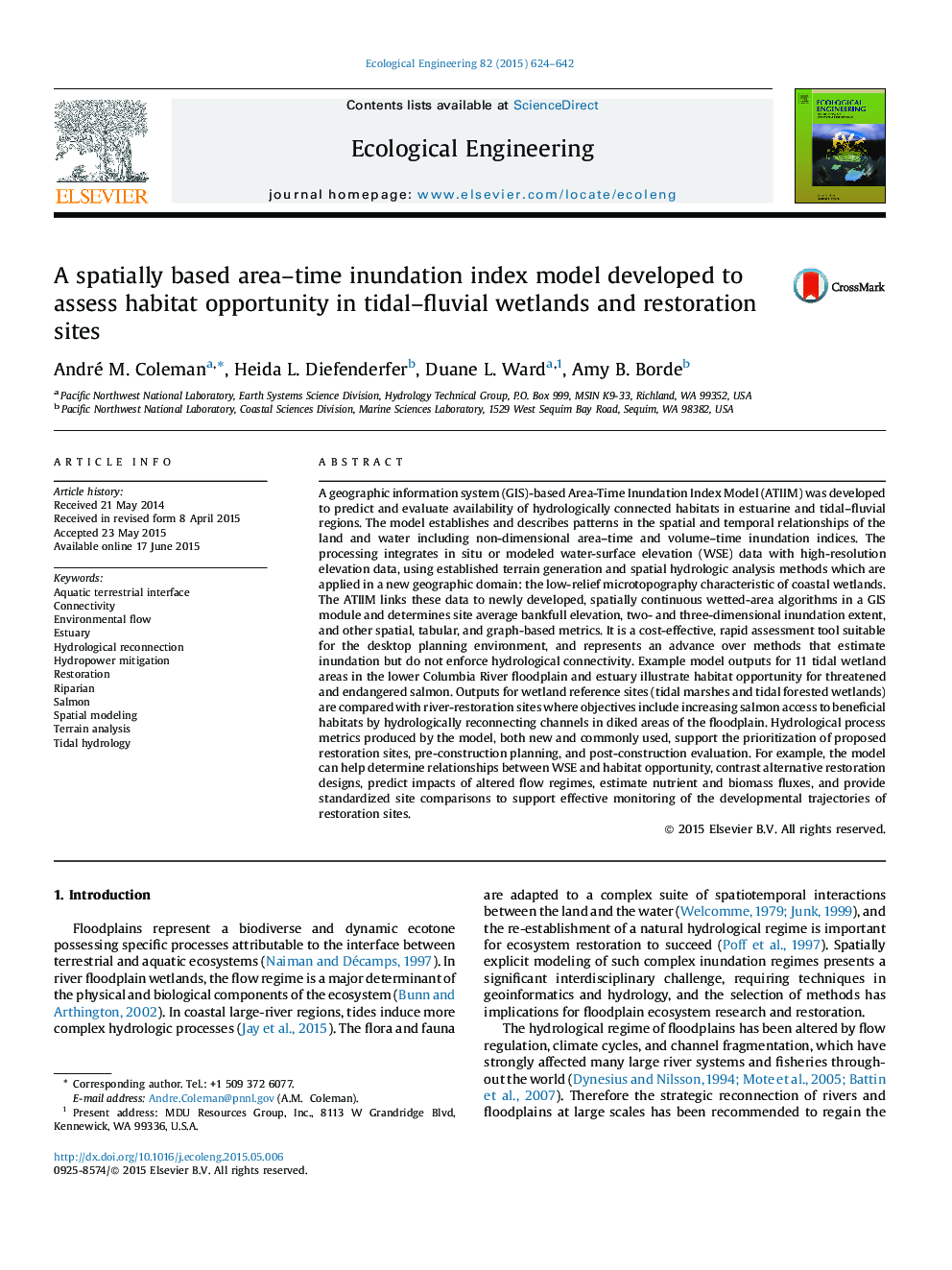| کد مقاله | کد نشریه | سال انتشار | مقاله انگلیسی | نسخه تمام متن |
|---|---|---|---|---|
| 4389015 | 1618017 | 2015 | 19 صفحه PDF | دانلود رایگان |
• The ATIIM rapidly assesses habitat opportunity, flux and effects of restoration actions.
• The inundation model enforces hydrologic connectivity and reveals spatiotemporal patterns.
• Sensitive to low-relief microtopography and estuarine channel network morphometry.
• Non-dimensional numbers permit the comparison of surface-water inundation among sites.
• A Cost-effective tool to predict and measure the hydrologic effects of management actions.
A geographic information system (GIS)-based Area-Time Inundation Index Model (ATIIM) was developed to predict and evaluate availability of hydrologically connected habitats in estuarine and tidal–fluvial regions. The model establishes and describes patterns in the spatial and temporal relationships of the land and water including non-dimensional area–time and volume–time inundation indices. The processing integrates in situ or modeled water-surface elevation (WSE) data with high-resolution elevation data, using established terrain generation and spatial hydrologic analysis methods which are applied in a new geographic domain: the low-relief microtopography characteristic of coastal wetlands. The ATIIM links these data to newly developed, spatially continuous wetted-area algorithms in a GIS module and determines site average bankfull elevation, two- and three-dimensional inundation extent, and other spatial, tabular, and graph-based metrics. It is a cost-effective, rapid assessment tool suitable for the desktop planning environment, and represents an advance over methods that estimate inundation but do not enforce hydrological connectivity. Example model outputs for 11 tidal wetland areas in the lower Columbia River floodplain and estuary illustrate habitat opportunity for threatened and endangered salmon. Outputs for wetland reference sites (tidal marshes and tidal forested wetlands) are compared with river-restoration sites where objectives include increasing salmon access to beneficial habitats by hydrologically reconnecting channels in diked areas of the floodplain. Hydrological process metrics produced by the model, both new and commonly used, support the prioritization of proposed restoration sites, pre-construction planning, and post-construction evaluation. For example, the model can help determine relationships between WSE and habitat opportunity, contrast alternative restoration designs, predict impacts of altered flow regimes, estimate nutrient and biomass fluxes, and provide standardized site comparisons to support effective monitoring of the developmental trajectories of restoration sites.
Figure optionsDownload as PowerPoint slide
Journal: Ecological Engineering - Volume 82, September 2015, Pages 624–642
